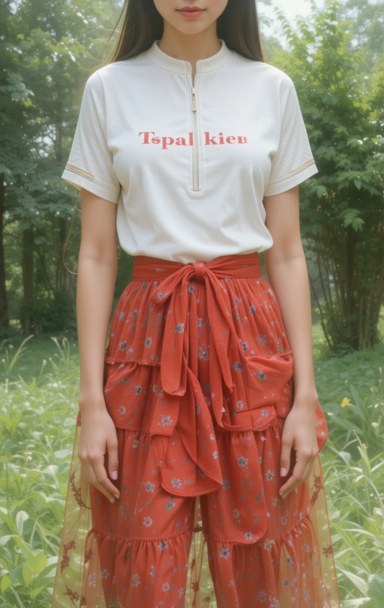Sustainable Teen Fashion: How to Dress Stylishly While Helping the Planet
Introduction
In today’s fast-paced world, fashion trends change rapidly, leading to increased consumption and waste. This phenomenon, known as “fast fashion,” has significant environmental consequences, including excessive water usage, pollution, and unethical labor practices. However, a growing number of teenagers are becoming more conscious of their impact on the planet and are seeking ways to dress stylishly while making sustainable choices. Sustainable teen fashion is not only an ethical choice but also a creative and trendy way to express personal style without harming the environment. This article explores how teens can build an eco-friendly wardrobe, shop responsibly, and still look fashionable.
Understanding Sustainable Fashion
Sustainable fashion refers to clothing and accessories that are designed, produced, and distributed in an environmentally and socially responsible manner. It encompasses several aspects, including:
- Eco-friendly materials: Fabrics such as organic cotton, hemp, bamboo, and recycled materials reduce environmental impact.
- Ethical production: Clothing made under fair labor conditions ensures that workers are paid fairly and treated humanely.
- Waste reduction: Sustainable fashion promotes minimal waste through recycling, upcycling, and mindful shopping.
- Durability and longevity: Investing in high-quality, timeless pieces reduces the need for frequent replacements.
Building a Sustainable Wardrobe
A sustainable wardrobe starts with mindful choices. Teens can follow these steps to ensure their clothing choices align with eco-friendly values.
1. Declutter and Organize
Before buying new clothes, teens should assess their current wardrobe. By decluttering and organizing, they can identify what they need and donate or repurpose items they no longer use. Clothing swaps with friends and family are also a great way to refresh a wardrobe without buying new items.
2. Invest in Timeless Pieces
Fast fashion encourages disposable trends, but sustainable fashion promotes longevity. Teens should invest in classic and versatile pieces, such as well-fitted jeans, basic T-shirts, and neutral-colored outerwear. These items can be mixed and matched to create multiple outfits.
3. Opt for Quality Over Quantity
Instead of buying many cheap clothes, teens should focus on purchasing fewer, high-quality pieces that last longer. Durable fabrics and well-constructed garments withstand wear and tear, reducing the need for frequent replacements.
Sustainable Shopping Habits
Shopping sustainably does not mean compromising on style. Teens can adopt the following practices to make eco-conscious purchases.
1. Support Ethical Brands
Many fashion brands prioritize sustainability and ethical production. Brands like Patagonia, Reformation, and Everlane use eco-friendly materials and fair labor practices. Teens should research brands that align with their values and support those making a positive impact.
2. Buy Second-Hand and Vintage
Thrift stores, consignment shops, and online platforms like Depop and Poshmark offer stylish second-hand clothing. Buying pre-loved items extends the life of clothing and reduces waste. Vintage fashion also provides unique and trendy pieces that stand out.
3. Choose Sustainable Fabrics
Not all fabrics are created equal. Some sustainable options include:
- Organic cotton: Grown without harmful pesticides and chemicals.
- Hemp and bamboo: Require less water and pesticides.
- Recycled materials: Reduce waste by repurposing old fabrics.
- Tencel and modal: Made from sustainably sourced wood pulp.
4. Practice Mindful Shopping
Before making a purchase, teens should ask themselves:
- Do I really need this item?
- Can I style it with multiple outfits?
- Is it made from sustainable materials?
- Does it come from an ethical brand? By answering these questions, they can avoid impulse purchases and contribute to a more sustainable fashion industry.
DIY and Upcycling: A Creative Approach
Teens can get creative with their wardrobe by upcycling and personalizing old clothes. Some ideas include:
- Tie-dyeing old T-shirts for a fresh look.
- Adding patches or embroidery to jeans or jackets.
- Turning oversized shirts into crop tops or dresses.
- Repurposing old fabrics into accessories like tote bags or headbands.
Upcycling not only reduces waste but also allows for unique, one-of-a-kind fashion statements.
The Role of Social Media in Promoting Sustainable Fashion
Social media plays a significant role in shaping fashion trends. Many influencers and content creators advocate for sustainable fashion, providing inspiration and guidance on eco-friendly styling. Teens can follow sustainability advocates on platforms like Instagram, TikTok, and YouTube to learn more about ethical brands, thrifting tips, and DIY fashion projects.
Additionally, raising awareness by sharing sustainable fashion choices can encourage peers to make more eco-conscious decisions. Posting thrift hauls, outfit ideas, and upcycling projects can inspire others to adopt sustainable habits.
The Environmental Impact of Fast Fashion
Fast fashion is one of the most polluting industries globally. Some alarming statistics include:
- The fashion industry accounts for 10% of global carbon emissions.
- Producing one cotton T-shirt requires 2,700 liters of water, equivalent to what an average person drinks in 2.5 years.
- Over 85% of textiles end up in landfills each year.
- Many fast fashion brands exploit workers in developing countries, subjecting them to unsafe conditions and unfair wages.
By choosing sustainable fashion, teens can help combat these environmental and ethical issues.
Encouraging a Sustainable Mindset
Sustainable fashion is not just about what we wear; it’s a mindset that extends to all aspects of life. Teens can embrace sustainability by:
- Repairing and maintaining clothes instead of discarding them.
- Borrowing or renting outfits for special occasions rather than buying new ones.
- Educating friends and family about the importance of ethical fashion.
- Supporting local artisans and small businesses that prioritize sustainability.
Conclusion
Sustainable teen fashion proves that dressing stylishly does not have to come at the expense of the planet. By making informed choices, shopping mindfully, and embracing creativity, teens can build a wardrobe that reflects their personality while promoting environmental responsibility. With the rise of ethical brands, second-hand shopping, and DIY fashion, sustainable style is more accessible than ever. By adopting these practices, teens can lead the way in transforming the fashion industry and creating a more sustainable future.

















